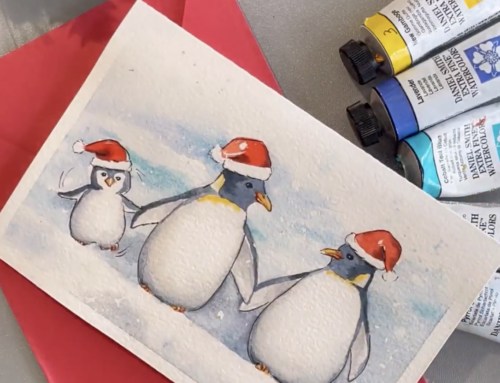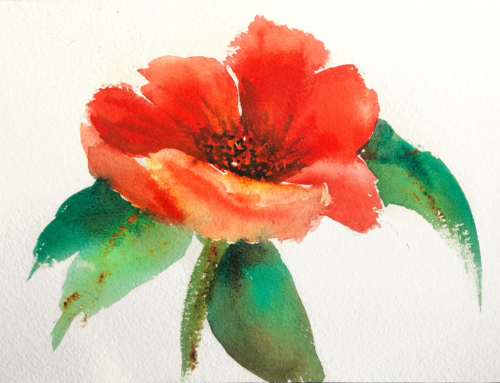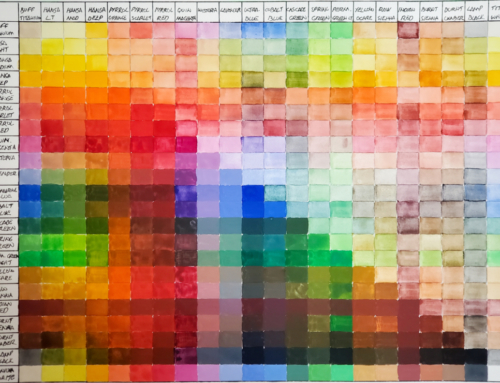Share:
The DANIEL SMITH Essentials Watercolor Set with six colors is just what you need this summer! The pigments were carefully selected to give you a wide range of colors and values. When mixed together, the colors you can create are endless!
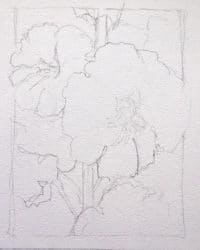
Step 1
I start by drawing with a 2B pencil on 140lb cold press paper. I am especially aware of the negative space between the flowers, stem and leaves. I want variety, so I draw enough to get the general shapes, but don’t over-draw. I want to leave opportunities for new shapes to develop in the painting process.
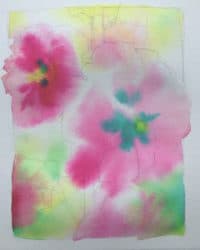
Step 2
I use transparent paint to build up glazes. To determine which three colors from the Essentials Set I will use for the underpainting, I make numerous color swatches. The paint needs to be the same consistency to encourage good mixing on the paper. I’m looking for interesting combinations – how they mix when wet, range of colors, range of values and do they relate to my subject). I chose Hansa Yellow Light (HYM), Quinacridone Rose (QR), and Phthalo Blue GS.
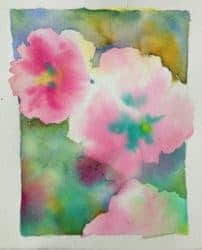
Step 3
I wet the entire paper with clean water and introduce the three colors separately onto the wet surface. I paint at an angle to encourage mixing as the paint moves. I don’t over work the surface with a paint brush, but encourage the paint to mix on the paper. Let completely dry.

Step 4
I continue with my original three colors, but I also pull out French Ultramarine and New Gamboge. When I bring a new color to the mix, it always touches one of the first set of colors. I start at the top, working my way down the paper with a mixture of French Ultramarine and New Gamboge. I paint hard edges against the flowers to carve out the big shapes. As I move down the page, I push the colors towards green with Phthalo Blue GS. Let completely dry.
Step 5
I begin to define the flowers with a mixture of Quinacridone Rose and Pyrrol Scarlet. The surface is completely dry. As the form turns towards the light, I have a variety of edges. Form shadows have soft edges and cast shadows have hard edges. I soften the form shadow edges with clean water. Let completely dry.
Step 6
In the final stage I paint the darkest darks, smallest shapes and add final details. I focus on carving around the shapes (negative painting) to suggest the stem and leaves. On my palette I make two puddles of Phthalo Blue GS and Hansa Yellow Light. I allow these two puddles to mingle slightly. I don’t let the colors over mix. Each brush load will have a slight shift in color. I also drop a little Quinacridone Rose into the darkest area of green below the largest flower. The unexpected warmth livens up the area.
I finish by adding final details. I start with the center of the largest flower using Phthalo Blue GS and while still wet I add a touch of New Gamboge. Next I paint the darkest shadows on the flower petals. I make a reddish purple mixture with French Ultramarine and Quinacridone Rose. The greatest saturation of color will be in the darkest shadows.
Hope you’ve enjoyed this short demonstration. If you were unfamiliar with these paint colors before hopefully I’ve opened your eyes to their wonderful transparency, richness and mixing ability!




